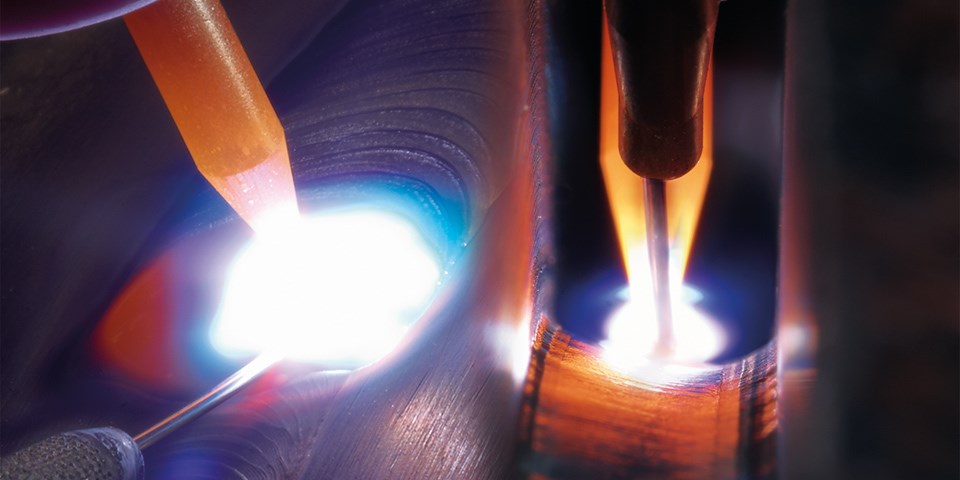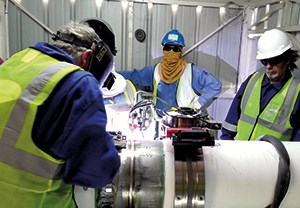The efficiency of this equipment is due to a precise programming facility. With new generation power sources, such as Polysoudes’ P4/P6, the development of a welding program, easily created via the graphical user interface, guarantees a high-quality weld through automation. The welding cycle can be repeated as often as necessary with the same result. Moreover, modern orbital welding equipment is designed for real-time monitoring of the key welding parameters, which can be checked and compiled into a complete weld protocol, generated and stored or produced as a printed document, for guaranteed traceability.
Modern systems also allow the operator to find matching weld programs by using a touchscreen or personal computer. The user specifies basic information, relating to the size and material of the tubes to be joined. The system consults its inbuilt database to find similar applications or suggests weld parameters determined by progressive calculation. The proposed welding procedure can finally be optimised by an expert help menu.
Personalised solutions
Orbital welding equipment is generally composed of the following components: a programmable power source with a remote control pendant, either distinct from or integrated into the welding head, the welding head and a wire feeding device if required by the application.
A range of modular and adaptable open and closed welding heads and orbital welding power sources, dedicated to diverse applications are available. These cover a wide range of diameters, wall thicknesses and workpiece geometries. Orbital welding equipment is designed to meet the increasing quality requirements for materials which are often difficult to weld. With high and special alloy materials, automated orbital welding can guarantee limited heat input during welding, thereby safeguarding material properties.
Orbital technology
In fields such as the semiconductor industry, biochemistry, instrumentation, food and beverage, the pharmaceutical industry, chemical/ sanitary industry, and aeronautics/ aerospace, fusion welds of thin-walled tubes can be made in a wide range of applications. Fusion welds are carried out using portable inverter power sources, combined with closed orbital welding heads. The closed chamber welding heads are specially designed to meet the requirements of hygienic applications (Figure 1).
Inside the welding head, the shielding gas flows directly to the weld zone. Thus, all welds are oxidation-free, complying with hygiene requirements. In most cases, the tubes are made of austenitic stainless steel, but nickel alloys, as well as titanium and its alloys, can also be welded, in a range of diameters.
In the fields of electricity production (power plants), oil & gas industry and chemical or petrochemical industries, tube-to-tube welding applications with the addition of filler wire are often demanded and orbital TIG welding can handle the wide range of base materials which are used (Figure 2).
Automation and high productivity
In all kinds of industries, but mostly in the chemical or petrochemical industries and in electric power plants, where boilers and heat exchangers are used, tube-to-tube sheet welding heads, with or without filler wire and a continuous rotating torch can be used. A high duty cycle is achieved due to water cooling.
For very thick-walled pipes, Polysoude has achieved another way of increasing productivity in addition to the Hot-Wire TIG process, by reducing the weld groove design, and therefore the volume to be filled by the weld. The use of an open-type carriage welding head equipped with a Narrow Groove torch limits the quantity of metal deposited (Figure 3).
The perfect weld
Automated TIG orbital welding of pipe components is continually increasing in importance. The process has a huge impact on quality, as it creates smooth, high-quality welds, at high production rates, often under demanding environmental conditions.





